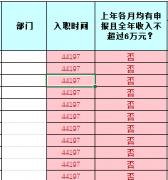问题描述
这里我创建了一个包含单个文档的集合
Here I have created a collection with a single document
db.getCollection('example').insert({"example":1});
我尝试使用 Projection,但我找回了 _id.
I have tried to use Projection, and I get back the _id.
db.getCollection('example').find({"example":1},{"_id":1});
{
"_id" : ObjectId("562a6300bbc948a4315f3abc")
}
但是,我需要如下输出.
However, I need the below output as shown below.
- id 而不是 _id
ObjectId("562a6300bbc948a4315f3abc") vs "562a6300bbc948a4315f3abc"
- id and not _id
ObjectId("562a6300bbc948a4315f3abc") vs "562a6300bbc948a4315f3abc"
<代码>{id":562a6300bbc948a4315f3abc"}
虽然我可以在我的应用服务器(基于 PHP)上处理 #1 和 #2 以获得所需的输出,但我正在寻找是否有办法在从 mongo 本身查询时获得预期结果
Although I can process #1 and #2 on my app server(PHP based) to get the desired ouput, I am looking if there is a way to get the expected result on querying from mongo itself
推荐答案
MongoDB 4.0 添加了 $convert 聚合运算符和 $toString 别名,它允许你做到这一点:
MongoDB 4.0 adds the $convert aggregation operator and the $toString alias which allows you to do exactly that:
db.getCollection('example').aggregate([
{ "$match": { "example":1 } },
{ "$project": { "_id": { "$toString": "$_id" } } }
])
一个主要的用法很可能是使用 _id 值作为文档中的键".
A main usage would most likely be though to use the _id value as a "key" in a document.
db.getCollection('example').insertOne({ "a": 1, "b": 2 })
db.getCollection('example').aggregate([
{ "$replaceRoot": {
"newRoot": {
"$arrayToObject": [
[{
"k": { "$toString": "$_id" },
"v": {
"$arrayToObject": {
"$filter": {
"input": { "$objectToArray": "$$ROOT" },
"cond": { "$ne": ["$$this.k", "_id"] }
}
}
}
}]
]
}
}}
])
哪个会返回:
{
"5b06973e7f859c325db150fd" : { "a" : 1, "b" : 2 }
}
它清楚地显示了字符串,另一个例子也是如此.
Which clearly shows the string, as does the other example.
尽管通常有一种方法可以在从服务器返回文档时对光标进行转换".这通常是一件好事,因为 ObjectId 是一个 12 字节的二进制表示,而不是需要更多空间的 24 个字符的十六进制字符串".
Generally though there is usually a way to do "transforms" on the cursor as documents are returned from the server. This is usually a good thing since an ObjectId is a 12-byte binary representation as opposed to a 24 character hex "string" which takes a lot more space.
shell 有一个 .map() 方法
The shell has a .map() method
db.getCollection('example').find().map(d => Object.assign(d, { _id: d._id.valueOf() }) )
NodeJS 有一个 Cursor.map() 可以做很多相同的事情:
And NodeJS has a Cursor.map() which can do much the same thing:
let cursor = db.collection('example').find()
.map(( _id, ...d }) => ({ _id: _id.toString(), ...d }));
while ( await cursor.hasNext() ) {
let doc = cursor.next();
// do something
})
同样的方法也存在于其他驱动程序中(只是不是 PHP),或者您可以迭代光标并转换内容,这更有可能是最好的做法.
And the same method exists in other drivers as well ( just not PHP ), or you can just iterate the cursor and transform the content as is more likely the best thing to do.
实际上,在 shell 中工作时,只需将整个游标结果添加到任何游标返回语句中,就可以轻松地将其简化为单个对象
In fact, whole cursor results can be reduced into a single object with great ease by simply adding to any cursor returning statement, when working in the shell
.toArray().reduce((o,e) => {
var _id = e._id;
delete e._id;
return Object.assign(o, { [_id]: e })
},{ })
或者对于像 nodejs 这样的完整 ES6 JavaScript 支持环境:
Or for full ES6 JavaScript supporting environments like nodejs:
.toArray().reduce((o,({ _id, ...e })) => ({ ...o, [_id]: e }),{ })
非常简单的东西,没有需要在聚合框架中处理的复杂性.并且很可能以几乎相同的方式使用任何语言.
Really simple stuff without the complexity of what needs to process in the aggregation framework. And very possible in any language by much the same means.
这篇关于mongodb 在查找查询中获取 _id 作为字符串的文章就介绍到这了,希望我们推荐的答案对大家有所帮助,也希望大家多多支持跟版网!



 大气响应式网络建站服务公司织梦模板
大气响应式网络建站服务公司织梦模板 高端大气html5设计公司网站源码
高端大气html5设计公司网站源码 织梦dede网页模板下载素材销售下载站平台(带会员中心带筛选)
织梦dede网页模板下载素材销售下载站平台(带会员中心带筛选) 财税代理公司注册代理记账网站织梦模板(带手机端)
财税代理公司注册代理记账网站织梦模板(带手机端) 成人高考自考在职研究生教育机构网站源码(带手机端)
成人高考自考在职研究生教育机构网站源码(带手机端) 高端HTML5响应式企业集团通用类网站织梦模板(自适应手机端)
高端HTML5响应式企业集团通用类网站织梦模板(自适应手机端)